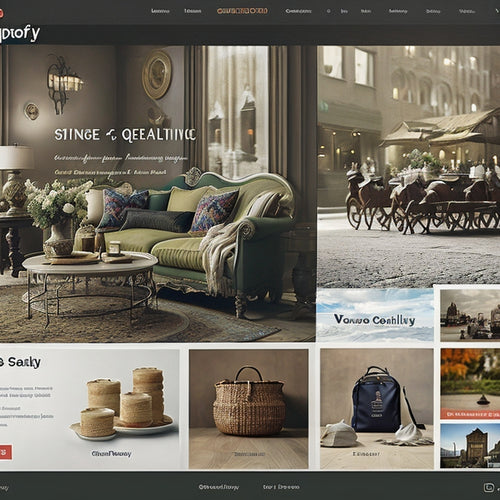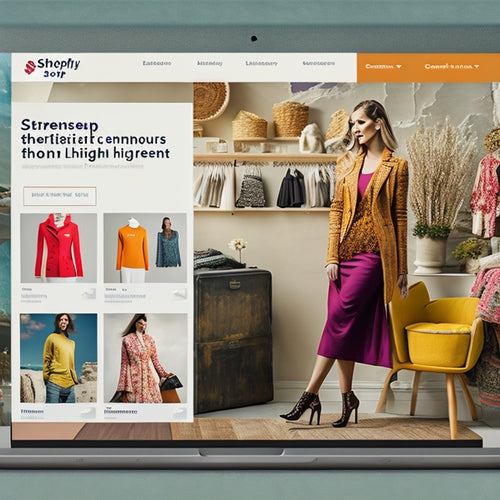Understanding the Power of Interactive Shoppable Videos
Share
In the ever-evolving landscape of digital marketing, interactive shoppable videos have emerged as a powerful tool for businesses to engage with their consumers. This article aims to provide a comprehensive understanding of the potential held by shoppable videos, exploring their rise in popularity and the benefits they offer to consumers.
Additionally, we will delve into how businesses can effectively leverage this innovative format to drive sales and enhance customer experience. By examining successful case studies and highlighting best practices, readers will gain valuable insights into the world of interactive shoppable videos.
- Shoppable videos have numerous benefits and are effective in increasing online sales, improving customer engagement, enhancing user experience, and increasing conversion rates.
- Successful companies such as Sephora and TRESemmé have seen positive results from implementing shoppable videos, including increased online sales and improved marketing campaigns.
- Shoppable videos have a significant impact on online sales, leading to higher conversion rates and a positive return on investment, ultimately boosting the bottom line.
- Tracking user engagement is crucial in gaining valuable insights for businesses, measuring video effectiveness, optimizing marketing strategies, improving customer experiences, and enhancing conversion rates.
The Rise of Shoppable Videos in Digital Marketing
The rise of shoppable videos in digital marketing has been evident as a result of their ability to provide an interactive and seamless shopping experience for consumers. With the increasing role of social media in advertising, shoppable videos have gained popularity as a dynamic tool to engage with customers and drive sales. Shoppable videos allow viewers to click on products within the video itself, leading them directly to an online store or product page where they can make a purchase. This integration of e-commerce functionality within video content eliminates the need for consumers to search for products separately, streamlining the purchasing process.
Furthermore, shoppable videos offer a unique opportunity for brands to showcase their products in action, allowing customers to see how they are used or worn in real-life scenarios. This immersive experience not only increases customer engagement but also builds trust and credibility for the brand.
Looking ahead, future trends in shoppable videos are likely to focus on enhancing personalization and interactivity. For instance, personalized recommendations based on individual preferences could be integrated into shoppable videos, providing tailored shopping experiences that resonate with each viewer. Additionally, advancements in augmented reality (AR) technology may enable consumers to virtually try on products within the video itself, further enhancing their shopping experience.
In conclusion, the rise of shoppable videos in digital marketing is driven by their ability to create interactive and seamless shopping experiences. As social media continues to play a significant role in advertising strategies, brands are increasingly adopting this innovative approach. Future trends will likely see even more personalized and interactive features incorporated into shoppable videos, further revolutionizing the way consumers shop online.
Benefits of Interactive Shoppable Videos for Consumers
Consumers can reap numerous advantages by engaging with interactive videos that allow them to seamlessly make purchases while watching. One of the key benefits is the personalization aspect. Interactive shoppable videos enable consumers to have a tailored shopping experience based on their preferences and interests. Through features like product recommendations and personalized content, consumers feel more connected to the brand and are more likely to make a purchase.
Moreover, these videos also contribute to increased conversion rates. By integrating clickable links or buttons within the video, consumers can easily navigate to the product page or add items directly to their shopping cart without interrupting their viewing experience. This seamless transition from watching to purchasing eliminates any potential friction points that may deter consumers from completing a transaction.
Additionally, interactive shoppable videos provide an immersive and engaging experience for consumers. With visually appealing visuals, captivating storytelling techniques, and interactive elements such as quizzes or polls, these videos create a sense of belonging for viewers. They feel actively involved in the shopping process and are more motivated to explore products further.
In conclusion, interactive shoppable videos offer significant benefits for consumers. The personalization aspect enhances their shopping journey by providing tailored recommendations and content, while increased conversion rates ensure a smooth purchasing experience. Moreover, these videos foster engagement through immersive experiences that create a sense of belonging among viewers. As technology continues to advance in digital marketing, it is clear that interactive shoppable videos will continue shaping consumer behavior and revolutionizing online shopping experiences.
How Businesses Can Leverage the Power of Shoppable Videos
Businesses can optimize their marketing strategies by leveraging the potential of interactive videos that enable seamless shopping experiences. One way to do this is through shoppable video analytics, which provide valuable insights into consumer behavior and preferences. By analyzing metrics such as click-through rates, engagement levels, and purchase conversions, businesses can gain a deeper understanding of what resonates with their target audience. This data-driven approach allows them to refine their content and tailor their offerings to better meet customer needs.
In addition, integrating shoppable videos on social media platforms can significantly enhance a business's online presence and reach. With the increasing popularity of social media platforms like Instagram and TikTok, brands have an opportunity to engage directly with consumers through immersive video experiences. By incorporating clickable links or tags within these videos, businesses can seamlessly guide viewers towards making purchases without disrupting their viewing experience.
Furthermore, by utilizing shoppable videos on social media, businesses can tap into the power of user-generated content (UGC). Encouraging customers to create and share their own shoppable videos featuring products or services not only amplifies brand visibility but also fosters a sense of belonging among consumers who feel valued as active participants in the brand community.
Overall, businesses that leverage shoppable video analytics and integrate shoppable videos on social media platforms stand to benefit from enhanced consumer engagement, increased sales conversions, and strengthened brand loyalty.
Best Practices for Creating Effective Shoppable Videos
To effectively create shoppable videos, it is crucial to carefully select visually appealing and high-quality products or services that align with the target audience's preferences and needs. However, design strategies play a significant role in enhancing the overall effectiveness of these videos.
One important aspect is ensuring a clean and clutter-free layout that allows viewers to focus on the products being showcased. By using an aesthetically pleasing design, businesses can captivate the audience's attention and increase their likelihood of making a purchase.
Conversion optimization is another key factor when creating effective shoppable videos. This involves strategically placing clickable hotspots within the video that lead directly to product pages or shopping carts. It is important to choose strategic moments in the video where viewers are most likely to be engaged and interested in learning more about the featured product or service.
Additionally, incorporating persuasive elements such as compelling storytelling, customer testimonials, and social proof can further enhance conversion rates. By evoking emotions and providing social validation, businesses can encourage viewers to take action and make a purchase.
In conclusion, by implementing design strategies and conversion optimization techniques, businesses can create highly effective shoppable videos that drive sales and engage their target audience. These best practices ensure that viewers are not only enticed by visually appealing products but also motivated to complete their purchasing journey seamlessly.
Case Studies: Successful Implementation of Shoppable Videos
Successful implementation of shoppable video strategies can be observed through various case studies.
One notable example is the collaboration between Sephora and Pinterest. Sephora created interactive shoppable videos that allowed users to browse and purchase products directly within the video platform. By integrating this feature, Sephora was able to provide a seamless shopping experience for their customers, resulting in increased sales and customer satisfaction.
Another successful case study is that of TRESemmé, a haircare brand. TRESemmé utilized shoppable videos on their website to showcase different hairstyles and products used to achieve them. By allowing viewers to click on the products shown in the video and make immediate purchases, TRESemmé saw a significant increase in online sales and engagement with their content.
Measuring ROI is an essential aspect of implementing shoppable video strategies. Case studies have shown that companies like Sephora and TRESemmé have experienced positive returns on investment by incorporating these interactive features into their marketing campaigns. The ability to track user engagement, conversion rates, and sales attributed to shoppable videos provides valuable insights for businesses looking to optimize their marketing efforts.
Overall, case studies demonstrate the effectiveness of shoppable videos in driving sales and enhancing customer experiences. Companies that embrace this innovative strategy can reap significant benefits by increasing conversions, improving customer engagement, and ultimately growing their bottom line.
Frequently Asked Questions
How do shoppable videos impact consumer behavior and purchasing decisions?
Shoppable videos have a significant impact on consumer behavior and purchasing decisions. They enhance brand loyalty by allowing consumers to engage with products in an interactive way. Psychological factors, such as convenience and the desire for belonging, influence purchasing decisions when using shoppable videos.
Are there any limitations or challenges associated with implementing shoppable videos in digital marketing?
Implementing shoppable videos in digital marketing presents several limitations and challenges. These include technical complexities, high production costs, platform compatibility issues, and the need for effective integration with e-commerce systems. Overcoming these obstacles is crucial for maximizing the potential of shoppable videos.
What are some innovative ways businesses can incorporate shoppable videos into their marketing strategies?
Businesses can enhance user engagement by incorporating interactive features in shoppable videos. This innovative approach allows customers to actively participate in the shopping experience, fostering a sense of belonging and increasing the likelihood of conversion.
How can businesses measure the effectiveness and ROI of shoppable videos?
Measuring shoppable video effectiveness and calculating shoppable video ROI can be achieved through various metrics such as click-through rates, conversion rates, average order value, and customer lifetime value. These measurements provide businesses with quantitative data to assess the impact of their shoppable video campaigns.
Are there any legal or ethical considerations that businesses should be aware of when using shoppable videos?
Legal implications and ethical considerations are crucial for businesses when using shoppable videos. Adhering to privacy laws, disclosing sponsored content, and ensuring transparency regarding data collection are vital for maintaining trust with consumers and avoiding legal repercussions.
Related Posts
-
How to Submit Your Shopify Sitemap to Search Engines
This article aims to provide guidance on the process of submitting a Shopify sitemap to search engines. It will expl...
-

How Is SEO Done in Shopify
This article explores the process of implementing SEO techniques in Shopify, a popular e-commerce platform. It aims ...
-

What Is the Best Faq App for Shopify
This article aims to provide an objective analysis of the best FAQ app for Shopify, catering to an audience seeking ...

